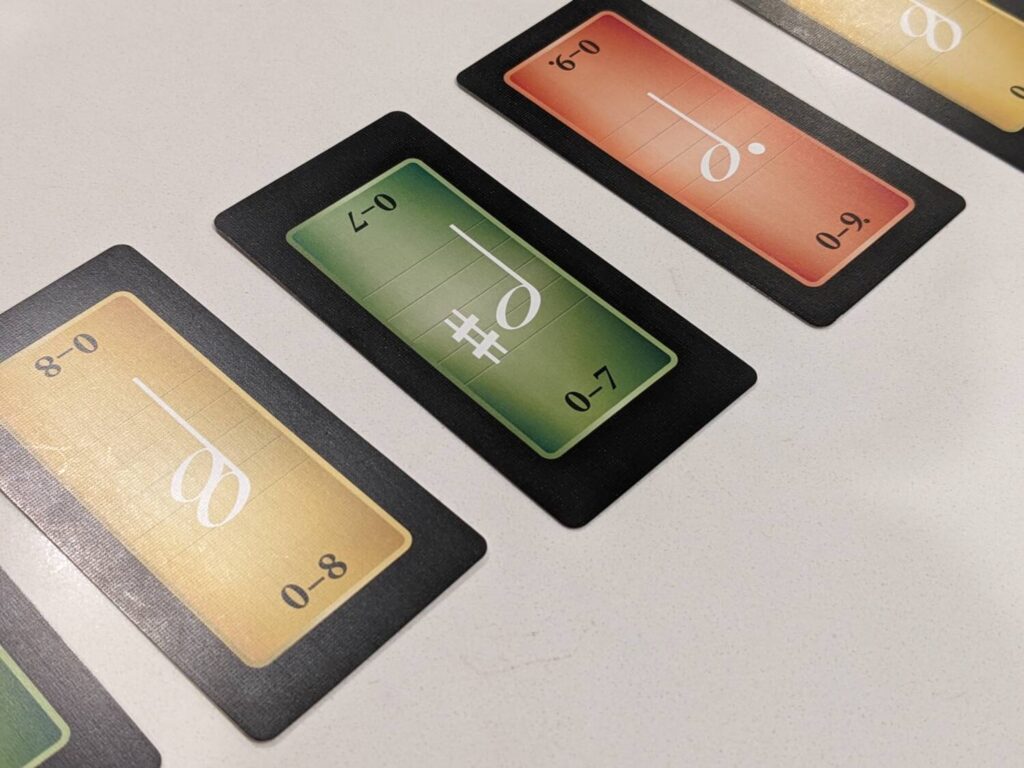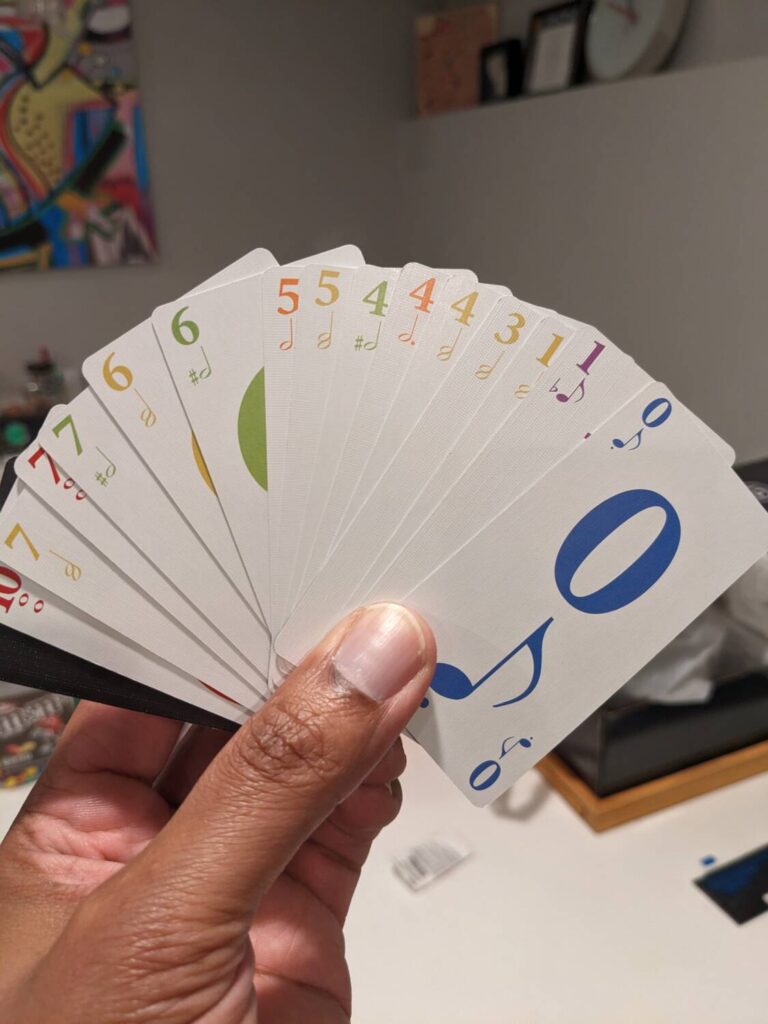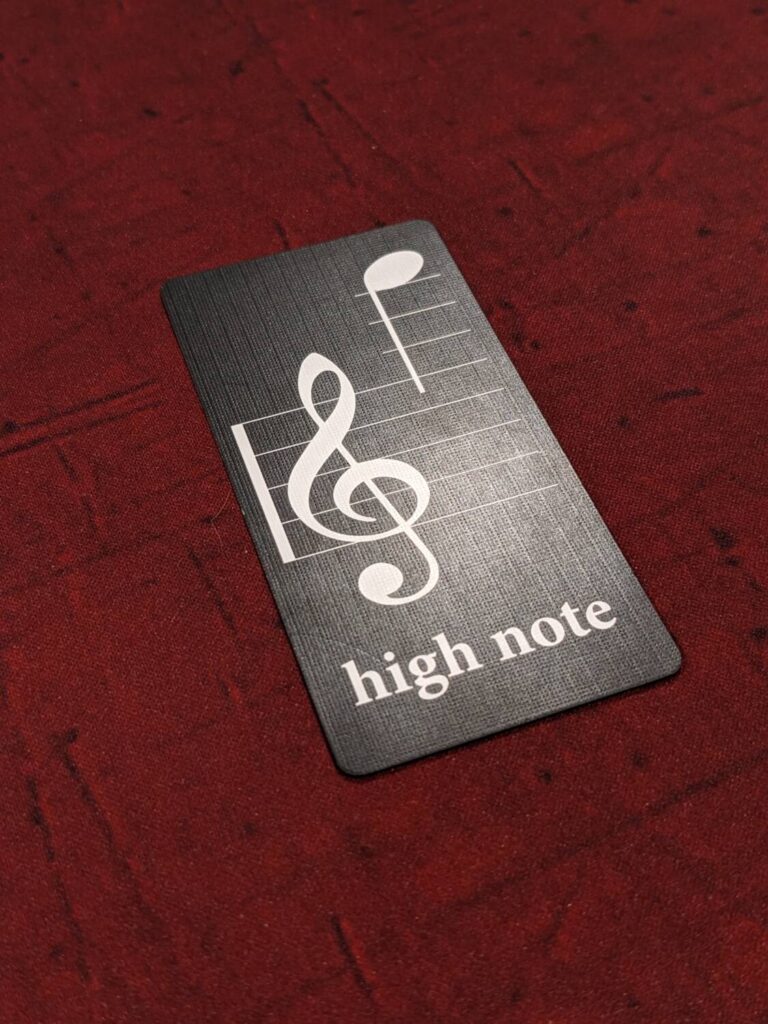Disclosure: Meeple Mountain received a free copy of this product in exchange for an honest, unbiased review. This review is not intended to be an endorsement.
After going hard on heavy strategy games in 2023, I need to loosen up a bit.
Lucky for me, there are lighter games hitting shelves every five minutes these days, and no category is getting more love than the trick-taking genre. All over the world, people are finding ways to tweak an age-old formula with games that take mere minutes to learn and play, and I have two friends in one gaming group who are constantly buying new games from Japan and Europe, hunting for the next great trick taker.
I recently had the chance to try a couple trick takers during my trip to TantrumCon, and the folks at Bezier Games were kind enough to hook me up with two 2024 releases that will hit later this year. (Another benefit of trick takers—they take up almost no space in carry-on luggage.) The first of those was Sandbag, and the second of those is Xylotar, an updated take on the 2023 trick taker Magic Trick, designed by Chris Wray.
In Magic Trick, players are dealt cards that are placed in numerical order, then passed to the player on their left. Here’s the twist: once passed, the cards can’t be looked at, so the player “holding” their new cards doesn’t know exactly what cards they have. Good luck!
Xylotar is a lighter and more accessible version of Magic Trick, and I am confident these changes improve gameplay for a wider audience. That’s because the bidding and scoring system haven’t changed between versions.
Xylotar has only one minor issue with its production: this is the Eagle-Gryphon Games-style table hog of trick-taking games at five players. If you’ve got a table big enough, Xylotar is worth a look.

The Prestige Bid
Xylotar accommodates 3-5 players, with a theme that qualifies as…ridiculous.
Featuring a bear playing an instrument best described as a rainbow xylophone guitar on the cover, Xylotar pushes the collective to become the best 1980s synth-rock player over a three-round format.
I’ve described the setup; when play begins each round, you’ve got a series of face-down cards in numerical rank order, but you don’t know the exact makeup of the cards. Players do get to see the possible range of each face-down card along with its suit, because the suit helpfully doubles as the range of possible numbers in that suit.
For example, the red suit (which is also the trump suit in Xylotar) has cards ranging from 0-10, so the backs of the red cards show a musical note—its suit, as well as a way to help sort the suits for accessibility purposes—as well as a label indicating the range of 0-10. The yellow suit runs 0-9. One of the suits goes from 0-4, so on and so forth.
So when each player “splays” their hand from their highest card to their lowest, they don’t know the exact value of each card, but they have an idea. Suddenly, Xylotar goes from a standard trick taker to a game where you are flying a little blind but with a very attractive deduction element that hooks anyone fond of games such as Turing Machine, The Search for Planet X, ArcheOlogic, or other recent deduction puzzles.
For example, I can look at my splayed cards and know that the yellow 0-9 suit card on the very far right side of my tableau (where the low numbers live) is probably a zero, maybe a one, but definitely low and something that likely won’t help me win any tricks. Ditto for the view of other players’ hands across the table, but with a nice hook—I know EXACTLY what the player to my left has, because I’m the one that sorted the hand of that player.
Oh yeah, baby.

Hands begin with mostly standard trick-taking rules. In the first round the player to the left of the dealer kicks off play, and in future rounds, the player with the lowest score leads. Players can lead with any non-trump card except the card on the far left of their face-down “hand”, a rule that I loved right away and that love deepened as I saw some of the depth that came from having to pick other cards. (Later, players can lead trump if trump has been broken or if they only have trump in their tableau.)
If a player has a card in the lead suit, they have to play it. If not, they can “slough” (throw off) or play a trump card, in the hopes that their trump play is high enough to win. Otherwise, the winner is the person who played the highest number of the lead suit.
Each trick is worth one point. At some point during each round, immediately after playing a card into a trick, a player may peek at two adjacent face-down cards and play one of them behind their tableau as their bid for that round. This commitment is always fun, because it announces to the table how many tricks a player thinks they will win based on current information.
It also requires a player to guess about cards that they haven’t seen yet. Sure, they know that cards near the right side of their “hand” are low, but are they both ones? A one and a two? What if you just played a card near that section of your “hand” and it was a two, and now you’ve got to pick between two cards that could swing as high as one and four, but you only have a way to win a total of two tricks?
The moment when players select their bid is always fascinating. If a player doesn’t choose a bid during play, their final card is used as their bid, which we found to be incredibly risky. The moment is key because while each trick won is worth a point, a player that ends the round with a bid equal to their won tricks gets a five-point prestige bonus. In every game of Xylotar played for this review, the winner came down to who got their prestige bonus most often. (There is no penalty for missing a bid in Xylotar, another way to soften the rules a bit from Magic Trick, which penalizes players who miss their bid.)
Anansi (2020, HeidelBÄR Games) is my favorite game that uses an in-round bidding mechanic—as opposed to the more-common, pre-round bidding mechanic used in classic card games like Spades—but Xylotar’s system is more forgiving and I find it to be better for a wider range of players.
That means that Xylotar has a chance to hit my table a little more often, with good reason.

Get It
Xylotar has impressed everyone who has tried it.
The system is easy to teach and each game has a number of layers that make plays feel somewhat unique. The bidding system, and the reveal when players begin to make their bids public, is the wow moment that continues to impress each and every time out, and scores are always tight. A player with a bad hand still has a great chance to score the prestige bonus in cases where they bid zero and fulfill that promise. With winning scores that usually land in the 15-to-20-point range, even three hands with low cards puts a player in contention.
Xylotar’s theme is non-existent, but I do think the guitar bear will still make the game sell copies. In terms of production, the use of smaller cards (roughly the same length but more narrow than traditional poker-sized cards) make for a slightly harder card to shuffle. The card size makes sense, though, because cards that are any wider would make the game even more of a table hog, something you can’t say often when it comes to trick takers.
The card suit colors aren’t perfect, but the use of musical notes as suit icons make it manageable to tell what suits people have in front of them from across the table. The rulebook is OK, but I am glad to have been taught live for my first play.
Xylotar is solid. Be on the lookout for this game come summertime!











